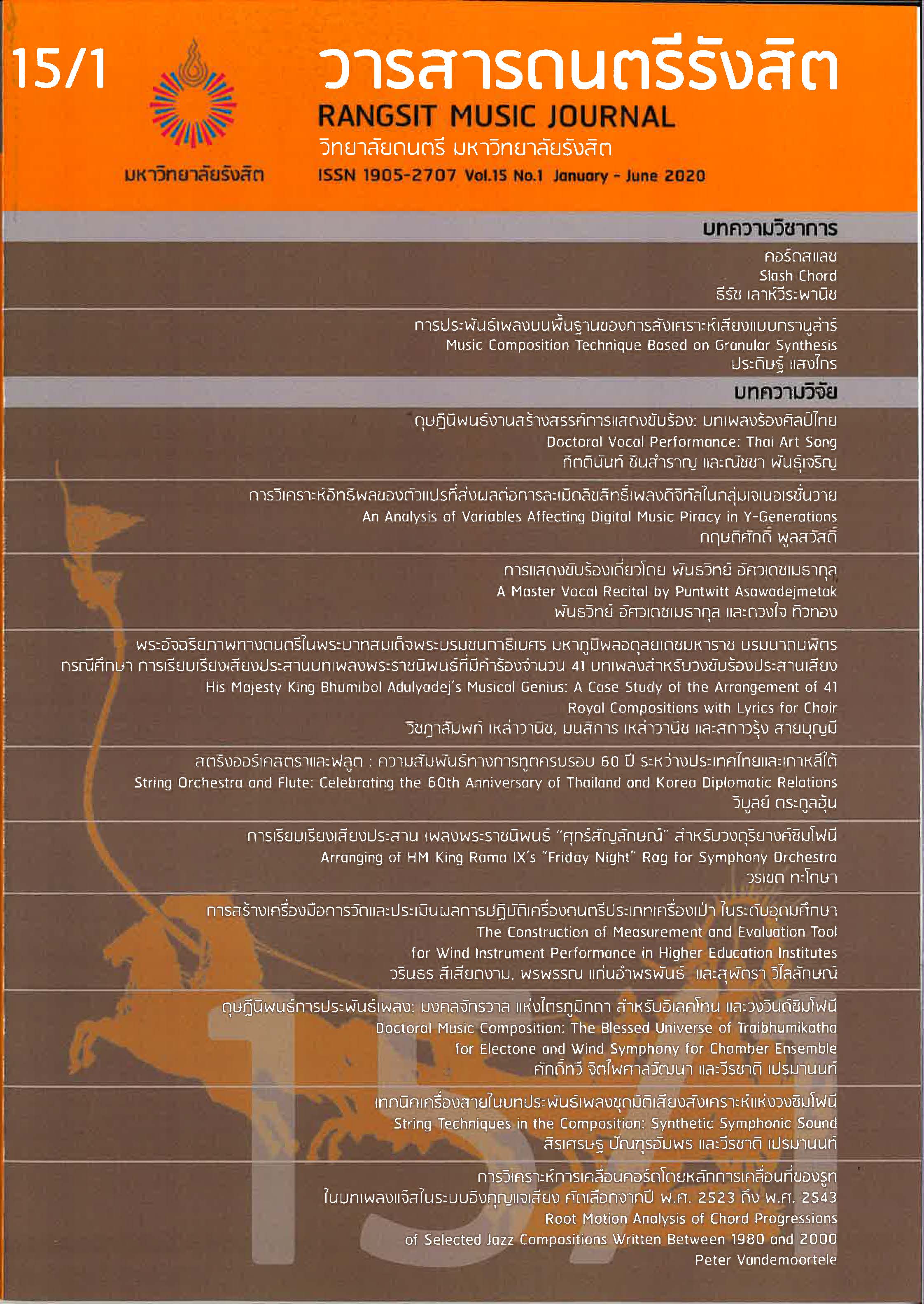Music Composition Technique Based on Granular Synthesis
Keywords:
Granular Synthesis, Clouds, Sound Mass, Twentieth Century MusicAbstract
This article focused on basic concept of granular synthesis application in music composition by emphasizing different level of time scale and building musical texture comparing to the sound mass and texture of clouds with various parameters of granular synthesis and give examples of music compositions according to this method. The method is found in compositions from Iannis Xenakis and György Ligeti, well-known composers in twentieth century, which the significant compositions are Concret PH, Bohor I, Persépolis, Atmosphère and Lux Aeterna. These compositions are based on granular synthesis. Thus studying basic idea of granular synthesis is the important role for analysing twentieth century music especially compositions based on this method.
References
2. Gabor, Dennis. “Acoustical Quanta and the Theory of Hearing.” Nature 159, 4044 (1947): 591-594.
3. Lee, Allan S. C., “Granular Synthesis in Csound.” In The Csound Book. edited by Richard Boulanger, 281-292. Cambridge, MA: MIT Press, 2000.
4. Roads, Curtis. “Automated Granular Synthesis of Sound.” Computer Music Journal 2, 2 (1978): 61-62.
5. __________. “Introduction to Granular Synthesis.” Computer Music Journal 12, 2 (1988): 11-13.
6. __________. Microsound. Cambridge, MA: MIT Press, 2001.
7. __________. Computer Music Tutorial. Cambridge, MA: MIT Press, 1966.
8. “Window Functions – An Analysis.” Accessed March 18, 2019. https://www.gaussianwaves.com/2011/02/window-functions-an-analysis/
9. “Waveform Shaped by Gaussian Envelope.” Accessed March 18, 2019. https://www.omicsonline.org/articles-images/2376-130X-2-121-g022.html
10. “10 most common types of counds found in the sky.” Accessed March 18, 2019. https://www.worldatlas.com/articles/10-most-common-types-of-clouds-found-in-the-sky.html
Downloads
Published
How to Cite
Issue
Section
License
กองบรรณาธิการฯ สงวนสิทธิ์ในการพิจารณาและตอบรับการตีพิมพ์ ความรับผิดชอบใดๆ เกี่ยวกับเนื้อหาและความคิดเห็นในบทความเป็นของผู้เขียนต่อบทความนั้นๆ กองบรรณาธิการฯ ไม่ต้องรับผิดชอบ



